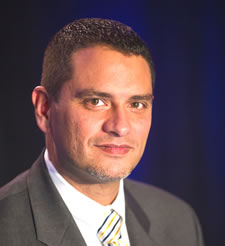
The gainful employment regulation recently announced by the U.S. Department of Education is painfully weak, especially when compared with the colossal and well-documented abuses committed by for-profit career colleges.
Under the new regulation, a career education program will need to fail all three of the following very forgiving standards for three out of four years before it can be declared ineligible for federal subsidies.
Read more about for-profit regulations in higher education…
Senator: For-profit colleges use subprime mortgage-type loans
Are ED rules an ‘unconditional surrender’ to for-profit colleges?
The new rules stipulate that a minimum of 35 percent of former students must make progress paying back their loans. A student is deemed to make progress if the principal on his loan balance decreases by at least $1 during the year; annual loan payments must be less than 30 percent of the discretionary income of a typical graduate; and annual loan payments must be less than 12 percent of a typical graduate’s total earnings
As punishment, programs that fail to meet all three standards are required to inform current and prospective students about the degree to which they failed, and must describe their plans for improvement.
However, enrollment in the program can keep growing and federal aid is not interrupted.
Academic programs that fail to meet all three standards during two out of three years are required to be a little more forthcoming about the problem. Among other things, such programs must display prominent debt warnings on their website and in promotional materials.
But enrollment growth is not restricted and federal aid is not interrupted. Also, under this scenario, if the college voluntarily decides to discontinue the program within 90 days, the program will only be declared ineligible for federal student aid for two years. In the meantime, that same institution will be free to launch a new, similar program which will, of course, qualify for federal subsidy.
Bottom line?
If students are failed by for-profits, they face life-long, crippling debt.
But if for-profits fail their students, they face the inconvenience of disclosing the truth about their programs, the burden of filing paperwork to voluntarily discontinue them, and the creative angst of rebranding their programs to reset the regulatory clock and maintain the federal subsidies that enrich their investors.
And because 81 percent of for-profit colleges are two-year or less than two-year institutions, the vast majority of their students will already be out of school and into the job market before any sanctions can be levied against the programs that shortchanged their dreams and made off with their cash.
Meanwhile, many of these former students will be shouldering huge debt and holding certificates or diplomas that may or may not lead to gainful employment.
In case you haven’t already noticed who is being protected and who’s getting thrown under the bus, the new regulation also offers for-profit colleges all sorts of lifelines and loopholes for “special” scenarios, both in terms of their annual failure patterns and in the way the standards are tested. Consider the following:
- Debt: Schools can opt to calculate their students’ debt-to-income ratios using only the cost of a program’s tuition and fees. By not including the costs associated with textbooks, room and board, etc., programs can make it appear as if students have less debt than they actually do.
- Income: The final regulation determines a program’s debt-to-income ratio on the basis of whichever is higher: the students’ median or mean income. By providing schools with a choice between two sets of data, it is easier for programs to maintain eligibility for federal funding.
- Surveys and state data: If the Social Security Administration is unable to provide income data for, let’s say, three students in its calculation of a program’s debt-to-income ratio, those specific students won’t be removed from the calculation. Instead, the data for the program’s three students with the highest loan debt will be removed in their place.
Painfully weak, indeed.
In announcing the regulations, U.S. Education Secretary Arne Duncan told The New York Times that “as a country, we need this sector to succeed.”
But shouldn’t the sector be expected to reciprocate by contributing to the country’s success? Or have 20 years of lax regulation and unfettered access to ever-increasing amounts of federal subsidies rendered the for-profit college sector too big to fail? Too powerful to be reined in? Immune from accountability?
The fact is, under-regulated for-profit college companies are a clear and present danger to the financial health of millions of traditionally underserved students and to the competitiveness of our country.
Fortunately, there is still hope.
The gainful employment regulation has not deterred the Senate Committee on Health, Education, Labor, and Pensions, chaired by Senator Tom Harkin, from continuing its investigations of the for-profit college sector.
Nor has it dissuaded 10 state prosecutors, under the leadership of Kentucky Attorney General Jack Conway, from delving into the well-documented abuses of prominent members of the for-profit sector.
For-profit college companies need to deliver on the promise of opportunity that they repeatedly have made to students and taxpayers alike. That promise is unambiguously articulated in every one of their recruitment ads, which depict happy graduates working in state-of-the-art jobs acquired thanks to their newly earned degrees.
None of these ads include disclaimers declaring “results not typical” or “individual results may vary,” which consumers have come to expect whenever advertisements portray the exception rather than the rule.
It is now up to the Senate and the states to provide students the protection they need. We can’t meet the workforce demands of tomorrow unless we clean up the for-profit college sector today.
Jose Cruz is vice president for education policy and practice at The Education Trust, a Washington, D.C.-based organization focusing on opportunity and achievement gaps in K-12 schools and higher education.
